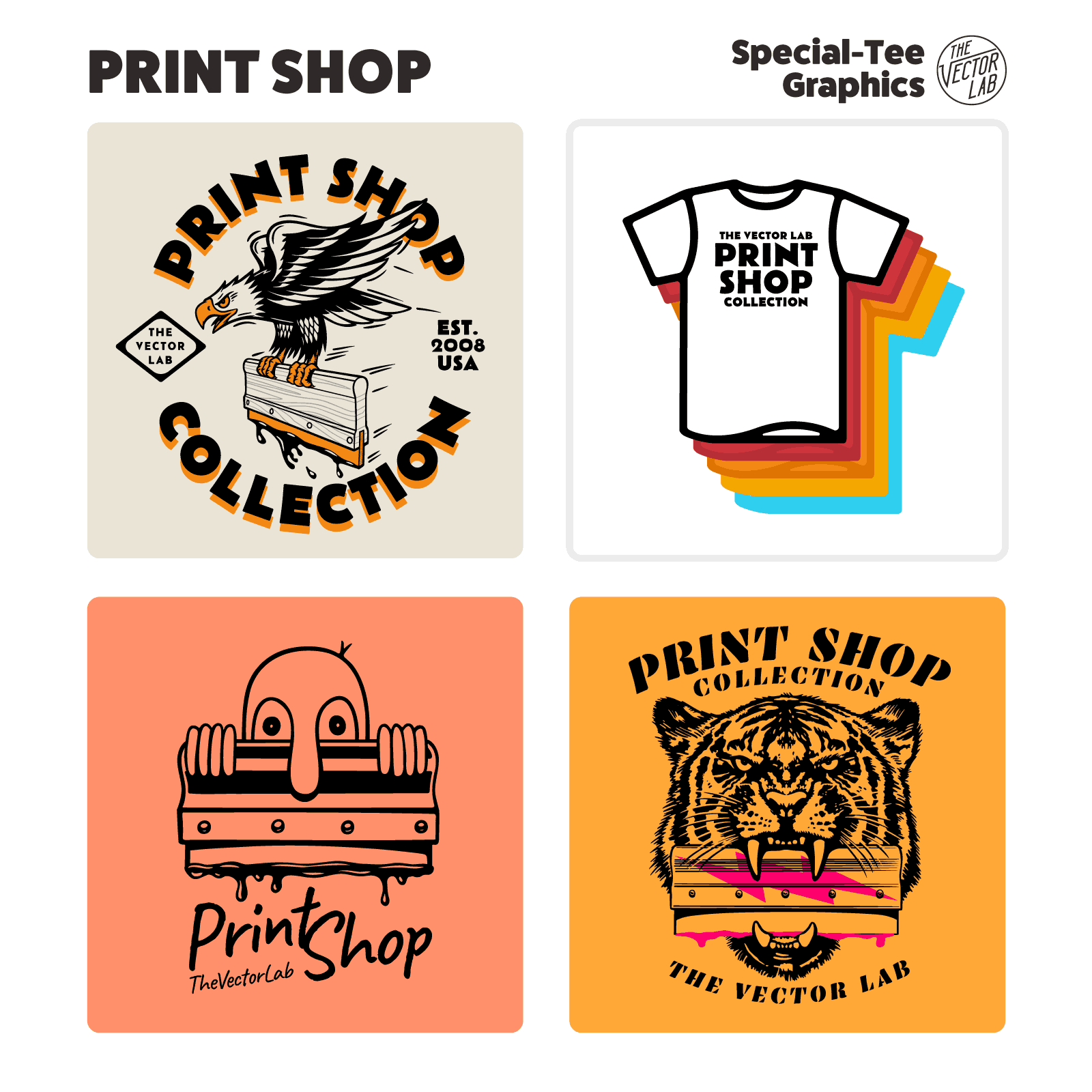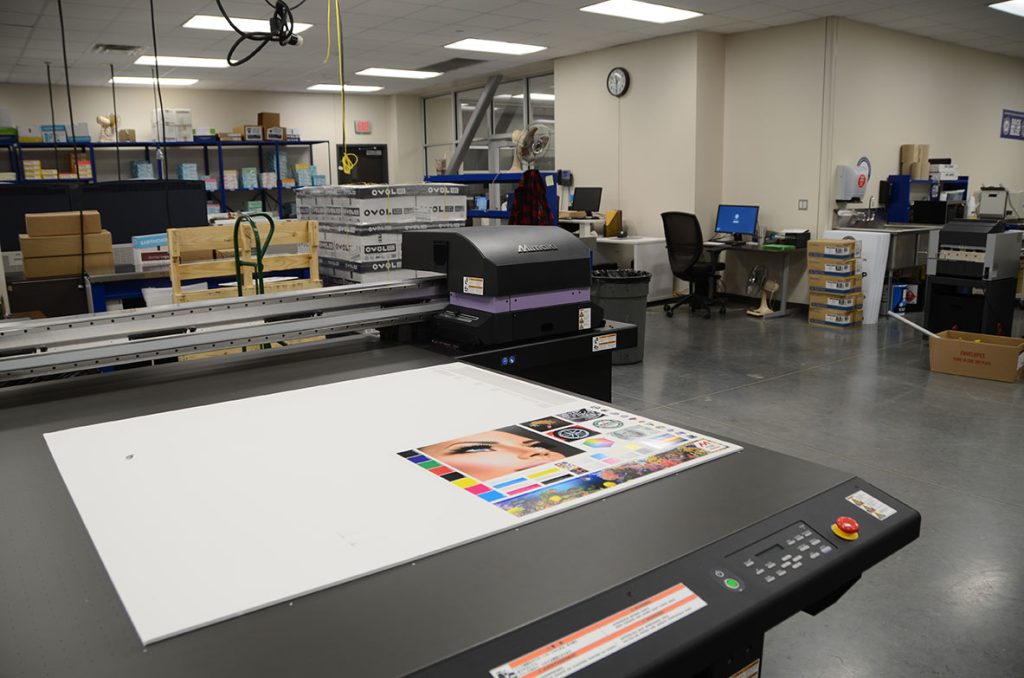Which Print Shop Near Me Offers the Best Canvas Options?
Which Print Shop Near Me Offers the Best Canvas Options?
Blog Article
The Ultimate Guide to Utilizing Printing Services for Personalized Art Prints
Guiding through the globe of custom art prints calls for a clear understanding of various printing solutions. Musicians need to think about elements such as printing techniques and products to attain the desired outcome. Each choice, from artwork prep work to shade calibration, plays an important role in the end product. As they explore these aspects, musicians can disclose the possibility for their job to link with target markets in a significant way. What steps can they take to ensure their prints stick out?
Understanding Different Kinds Of Printing Providers
Although numerous individuals might forget the ins and outs of printing services, recognizing the different kinds readily available is crucial for any individual seeking to produce custom art prints. One of the most typical types include electronic printing, balance out printing, and display printing. Digital printing is preferred for its quick turn-around and capacity to generate top notch photos straight from digital data, making it excellent for tiny runs. On the other hand, countered printing deals exceptional image high quality and is cost-efficient for bigger quantities, utilizing plates to move ink onto paper. Display printing, typically utilized for textiles and promotional items, includes pressing ink through a mesh screen, enabling lively shades and appearances. Each approach has its one-of-a-kind advantages and restrictions, making it essential for artists and designers to examine their particular demands, such as quantity, preferred high quality, and budget plan, prior to choosing a printing service that aligns with their artistic vision.
Choosing the Right Products for Your Prints
Selecting the ideal materials is essential for achieving premium custom-made art prints. Understanding the numerous kinds of paper and the significance of ink top quality can considerably influence the outcome. Musicians have to take into consideration these factors to ensure their vision is properly represented in the published item.
Paper Kind Explained
Choosing the ideal paper type is necessary for attaining the wanted aesthetic and sturdiness in custom art prints. Various alternatives exist, each offering distinctive features. As an example, shiny paper boosts color vibrancy and information, making it ideal for photography prints. Alternatively, matte paper supplies a softer surface, which is more suitable for art work that calls for nuance and texture. Art paper, commonly made from cotton or alpha cellulose, uses archival top quality and is ideal for reproducing detailed information in paints (Print Shop Near Me). Furthermore, specialty documents, such as watercolor or canvas, can add one-of-a-kind aesthetic effects. Eventually, picking the appropriate paper kind will considerably influence the final presentation, making sure that the artwork is both lasting and visually enticing
Ink Quality Matters
Ink high quality plays a vital duty in the overall success of personalized art prints. High-quality inks ensure vibrant shades, sharp information, and durability, which are vital for showcasing imaginative work. When choosing printing solutions, artists should consider pigment-based inks over dye-based choices, as they use much better discolor resistance and shade security. In addition, the selection of ink must match the chosen paper type, enhancing the print's aesthetic influence. Ecological aspects, such as moisture and temperature level, can additionally influence ink efficiency; as a result, musicians ought to make inquiries concerning ink formulations that withstand these elements. Ultimately, purchasing remarkable ink top quality can raise the final product, assuring that the art print remains real to the artist's vision for years to come.
Exploring Printing Methods: Digital vs. Standard
While both typical and digital printing techniques have their special benefits, the decision on which approach to use typically pivots on the specific demands of the artwork. Digital printing masters adaptability and rate, enabling quick turn-around times and the ability to print as needed. This approach is especially helpful for musicians who require tiny runs or special pieces, as it removes the demand for extensive configuration processes.Conversely, typical printing methods, such as lithography and display printing, typically produce richer textures and shades, appealing to artists seeking a much more tactile and genuine coating. These techniques can boost the depth and quality of the artwork, making them ideal for bigger versions. Additionally, typical approaches might offer a distinctive visual that digital printing often has a hard time to replicate. Ultimately, the selection in between these strategies should think about variables like wanted quality, quantity, and creative intent, guiding musicians to one of the most suitable alternative for their jobs.

Preparing Your Art Work for Printing
Effectively preparing artwork for printing calls for mindful interest to detail, regardless of the selected printing strategy. Artists have to assure that their files are produced at the ideal resolution, commonly 300 DPI, to preserve intensity and clearness. The correct color mode, normally CMYK for print, is vital to accomplish the wanted shade precision. Artists need to additionally consider the dimensions of the artwork, ensuring to consist of bleed locations if essential, to protect against any kind of unwanted white edges after trimming.Additionally, documents layouts play a vital role; TIFF and PDF are frequently chosen for high-grade prints. Before submission, it is very important to assess the artwork for any imperfections or undesirable components. By thoroughly checking these aspects, artists can boost the likelihood of their prints lining up with their innovative vision, inevitably bring about an effective printing outcome.
The Relevance of Shade Calibration and Proofing
Shade calibration and proofing are vital action in the printing procedure, as they assure that the last result accurately mirrors the musician's vision. Appropriate shade calibration assurances that the shades presented on the display match those that will certainly be printed. This procedure involves adjusting the screen setups, printer profiles, and inks to achieve a constant color representation.Additionally, proofing allows musicians to sneak peek their job before the last print run. This stage allows them to spot and rectify any discrepancies in shade, saturation, or detail, therefore reducing costly mistakes. By utilizing hard-copy or digital proofs, musicians can make educated decisions concerning adjustments needed for excellent results.Incorporating color calibration and proofing into the printing operations not only boosts the top quality of the final item but likewise cultivates a reliable collaboration in between the artist and the printing service, guaranteeing fulfillment and fidelity to the initial artwork.
Picking the Perfect Size and Format for Your Prints

Marketing and Marketing Your Customized Art Prints
Advertising and marketing and selling custom-made art prints needs a strong brand identity to attract attention in an open market. Reliable online promotion techniques and the tactical use social media sites systems can substantially improve presence and interaction. By integrating these elements, artists can produce a compelling existence that attracts possible purchasers.
Structure Your Brand Name Identity
Establishing a strong brand identification is necessary for artists seeking to efficiently market and market their customized art prints. This identity encompasses the musician's unique design, worths, and story, which reverberate with prospective customers. Artists ought to produce a cohesive aesthetic presence across all systems, consisting of logo designs, color design, and typography that reflect their imaginative vision. Additionally, a clear goal statement aids interact the artist's function and interest. Involving narration concerning the motivation behind each item can foster psychological links with the audience. Consistency in messaging, whether on social networks or packaging, improves recognition and count on. By thoroughly curating their brand identity, artists can distinguish themselves in an open market, drawing in dedicated consumers that appreciate their creativity.
Effective Online Promotion Strategies
What approaches can artists employ to efficiently advertise their personalized art publishes online? Establishing a specialist site showcasing the art work is essential. This site needs to consist of comprehensive summaries and premium pictures to engage potential purchasers. In addition, musicians can use e-mail marketing by constructing a customer checklist to share updates, promotions, and new launches. Collaborating with blog owners and influencers in the art neighborhood can broaden reach and reliability. Using special pieces or limited-time discounts can also develop necessity, encouraging acquisitions. Additionally, optimizing content for search engines through appropriate keyword phrases will certainly enhance visibility. Preserving a blog regarding the artistic process can attract art lovers, promoting a much deeper link with the audience and boosting the total marketing strategy.
Utilizing Social Network Operatings Systems
Social media site platforms offer as powerful tools for musicians wanting to market and offer their customized art prints. By leveraging systems like Instagram, Facebook, and Pinterest, musicians can display their job to a large target market. Involving visuals and tactical hashtags can increase visibility, attracting potential buyers to their accounts. Consistently publishing content, such as behind-the-scenes processes or brand-new styles, helps maintain audience rate of interest and fosters a sense of community. Additionally, artists can utilize targeted marketing to reach particular demographics, boosting the possibilities of sales. Partnerships with influencers or other musicians can additionally intensify direct exposure. Eventually, a well-curated social media existence not only promotes customized art prints however likewise develops a devoted client base in time.
Regularly Asked Concerns

Exactly how Do I Discover Reputable Printing Service Providers?
To find trusted printing company, one ought to investigate on the internet reviews, seek referrals from peers, compare portfolios, demand examples, and assess customer support responsiveness. This comprehensive approach warranties educated decisions and acceptable outcomes.
What Is the Common Turnaround Time for Custom Prints?
The normal turn-around time for custom prints differs by supplier, however typically varies from a couple of explanation days to 2 weeks. Elements influencing this include order dimension, complexity, and the particular printing strategies made use of.
Can I Obtain a Reimbursement if I'm Not Pleased With My Prints?
The question of acquiring a reimbursement for poor prints commonly depends on the specific printing service's policies. Lots of business supply complete satisfaction assurances, while others may have stringent return conditions, stressing the value of reviewing terms ahead of time.
Exist Any Kind Of Hidden Prices Related To Printing Solutions?
Many printing solutions might consist of concealed costs such as arrangement fees, shipping costs, or added fees for certain products. It's important for clients to ask about all potential expenses before see here finalizing their order.
Just How Can I Ensure My Prints Are Eco-friendly?
To ensure prints are ecologically friendly, one need to choose eco-friendly inks, recycled paper, and lasting printing methods. Looking into printing solutions that focus on sustainability and acquiring qualifications can further assure minimal environmental influence in the printing process. Guiding with the globe of customized art prints needs a clear understanding of various printing services. Lots of individuals might neglect the intricacies of printing solutions, understanding the different types offered is crucial for anybody looking to develop customized art prints. The most typical types consist of electronic printing, counter printing, and screen printing. Efficiently preparing art work for printing calls for careful attention to information, no matter of the selected printing technique. Prints aimed at galleries may need typical dimensions to help with framing, whereas special formats might appeal to collection agencies looking for something distinctive.Lastly, the printing solution's capabilities have to be examined.
Report this page